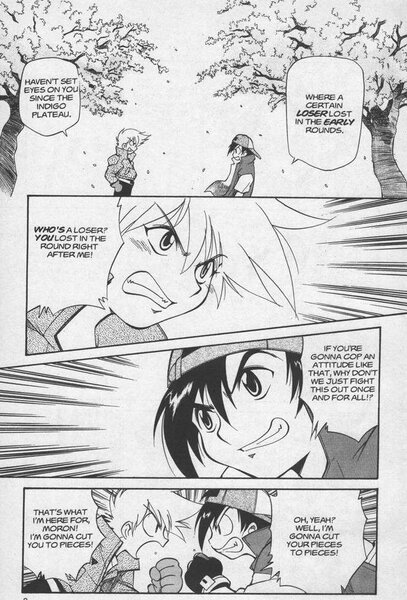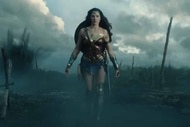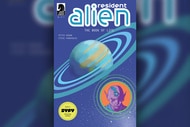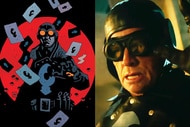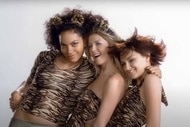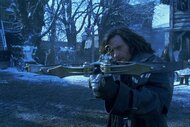Create a free profile to get unlimited access to exclusive videos, sweepstakes, and more!
Remembering 'Electric Tale of Pikachu,' Pokémon's first (and strangest) English manga
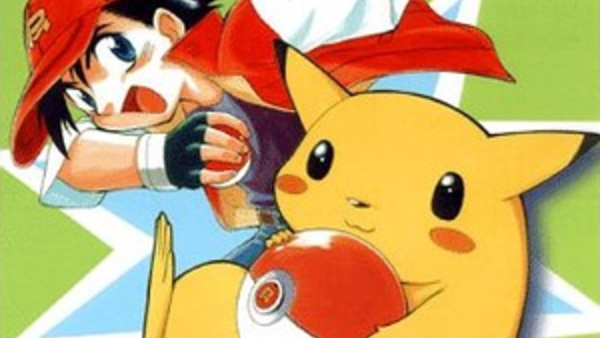
In the years following Pokémon's American debut in September 1998, it was easy to lose track of the sheer amount of series and tie-ins and scattered pieces of merchandise being offered to the seemingly endless supply of hungry fans. Due to this, many things have slipped through the Pokémon fandom cracks.
For example, while many remember the Burger King toys used to promote the United States release of the first movie (and the ensuing tragedy), we may forget about the fact that, a year earlier, KFC launched a line of toys meant to recall the Beanie Baby trend of a few years prior. And due to the success of Pokémon Adventures, a long-lasting manga series that Pokémon creator Satoshi Tajiri has lauded as "the comic that most resembles the world I was trying to convey," we may ignore The Electric Tale of Pikachu, which was actually the first Pokémon manga to be translated into English.
That's kind of a shame, because The Electric Tale of Pikachu is not just an exciting, vibrant series, but one that also reflects Pokémon's former status as a burgeoning wunderkind franchise and the treatment of manga in America at the time of its release. So, 25 years after Pokémon first came to life in Japan in 1996, we're here to reintroduce you to The Electric Tale of Pikachu.
Drawn by artist Toshihiro Ono (a creator who is also known for his work creating pornographic hentai), Electric Tale is a familiar story for Pokémon fans — kind of. Many of the plotlines and characters are based on the popular anime series, which hadn't yet premiered when Ono was contracted to illustrate the manga. So, while many details are familiar — the main character's name is Ash and his rival is named Gary Oak — other aspects of the story veer off from the now-iconic animated series.
To create the manga, Ono worked with scripts for the anime that he then had to adapt to fit the length and style of a manga chapter. His art style became a cool amalgamation of the video games, which he was familiar with, and the yet-to-be-seen anime's aesthetic. Ken Sugimori, the chief character designer and art director for Pokémon, had been the one to cement what is essentially Pokémon's "house style," rendering the creatures in a way that is both beautiful and instantly recognizable. Ono's work blends this with his own brand of playful looseness, as he admitted that it was hard to draw Pokémon with "any sense of realism." Thus, his creatures are full of personality, riding the line between battle-ready pets and anthropomorphized pals.
Electric Tale further sets itself apart from the anime because its story skips around, a feature Ono attributed to the fact that while a new anime episode comes out every week, his comic was published every other month. So those looking for a deep dive into the chronology of the established Pokémon world will be disappointed. For example, in the first volume, Ash's journey takes him from Pallet Town, then to Cerulean City, then to Mt. Moon, and then to Lavender Town, skipping or only briefly covering some of the moments and achievements that gamers and anime-watchers might have expected to see in the pages of the manga. As such, Electric Tale's comparatively incomplete narrative isn't really the draw, but rather the way in which Ono translates the world.
For this is where Ono truly excels. From the dingy store where Ash trades in his freshly caught Mankey to acquire a questionable treasure map of Mt. Moon, to the cavernous depths of the Pokémon Tower, a decrepit structure that serves as home to a monstrously huge Haunter, the world Ono serves stands apart from the games, the anime, and the other manga series. The world of Pokémon, even in its early years, quickly began to feel well-worn, with the games, Adventures, and the anime all covering the same locations. That Ono's designs are able to feel both familiar and refreshing is a testimony to his creativity. His version of the Kanto region is incomplete but also full of life, often filling in the gaps of our imagination. Fans have often clamored over the years for a Pokémon story that expands on the "seedier" implications of its universe, and Electric Tale definitely delivers on some of that luridness.
Despite its differences from the established Pokémon iconography already being enjoyed in the U.S., it was ready-made for an audience that craved more. That said, when Electric Tale made the leap from the Japanese pages of CoroCoro Comic to a format that much more resembled the way American comics are packaged, a change was made that transformed the look of the entire work. Viz Media, Electric Tale's American publisher, flipped the comic's layout, with the traditional manga style of right-to-left mirrored so that English readers (who might never have read a manga series before) used to reading comics from left to right wouldn't be confused. Some of Ono's art also had to be censored or toned down, mostly when it came to some of the more well-endowed or scantily clad female characters, ensuring that parents picking up the latest Pikachu fix for their children wouldn't be horrified by what they found in Electric Tale's pages. These changes don't really hurt the overall product, though, and Electric Tale remains effortlessly dynamic unless you're looking for a 1:1 adaptation of your Game Boy experience.
All of these tactics to make the manga a more palatable comic for Western audiences, combined with an extensive advertising campaign, worked. The comic book industry had seen a sharp decline in the '90s, falling victim to societal movements, an aging reader base, and their own marketing and storytelling tactics, which often valued the collectibility of issues rather than coherent, emotionally effective plots and characters.
Against all odds, Electric Tale flourished in 1999, selling over a million copies and becoming the best-selling "comic book" since 1993. Much of this had to do with Pokémon's explosive success that year, a triumph dubbed "Pokémania" by journalists, parents, businesses, and organizations that were struggling to keep up. You could make a case that any Pokémon comic would've been a huge hit in these circumstances, but you can't discount the fact that The Electric Tale of Pikachu is just plain fun to read, too.
Sadly, The Electric Tale of Pikachu would only last four volumes and 20 chapters, ending in early 2000 as Ash became champion of the Orange Islands League (a locale invented for the anime and not featured in any games). However, Ono makes it wistfully clear that Ash's journey happily continued and he even added in details about the continuing adventures of Gary Oak and Jessie and James of Team Rocket. (The latter two fall in love in Electric Tale, a detail also not included in the games or anime, much to the delight of shippers everywhere and also me.)
So what is the legacy of The Electric Tale of Pikachu, a manga commonly forgotten when we discuss how Pokémon arrived in the United States and swiftly enraptured an entire generation of kids? It certainly is a time capsule, recalling the struggles of a relatively nascent brand eager to find success wherever it lay. But it also displays just how consistently entertaining Pokémon is. We're familiar with the trials of Ash Ketchum. We understand what it's like to explore the Kanto region in Pokémon Red and Blue and become a champion. For longtime fans, it's a song we know by heart. But Electric Tale remains amusing regardless, proving that the strength of a fictional world often lies not just in what it contains, but in how it's shown to us.
